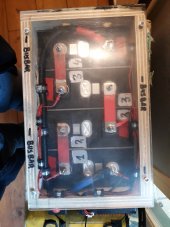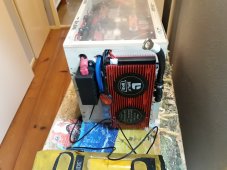Boondock Saint
Solar Enthusiast
- Joined
- Apr 8, 2021
- Messages
- 661
Ahhh, I see said the blind man. So the two specs are really the same, bingo.
I've read of using an insular material to prevent the possibility of shorting the outer jackets, but not so much a measure of sponge.
My plan was to use thin MDPE film from those black oven sheets you can buy on amazon and cut to just slightly smaller than the length and height and have one between each cell.
"I’ll be using 4/0 as opposed to bus bars." > What about sufficiently rated braided flexible busbars?
I've read of using an insular material to prevent the possibility of shorting the outer jackets, but not so much a measure of sponge.
My plan was to use thin MDPE film from those black oven sheets you can buy on amazon and cut to just slightly smaller than the length and height and have one between each cell.
"I’ll be using 4/0 as opposed to bus bars." > What about sufficiently rated braided flexible busbars?



![20210425_102520[1].jpg](/data/attachments/47/47344-578cdf6fbd5d9993b1cf27a392d0d75f.jpg)

